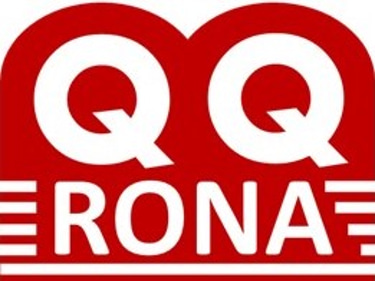Philosophy
Why philosophy?
Why should a website that presents a software program and a proposal for a new computing paradigm be concerned with philosophy? Because QQRONA offers a way to see and think about the world differently, dissolving some of the categorisations and differences in our thinking that have resulted in the many fractures we see around us, in a world where we seem to have mastery over the hard sciences, but are still unable to control our own actions and live in peace with each other.
What is often called the “Western tradition” has delivered huge advances and benefits to the world. But it also imposes a way of thinking that limits intellectual progress outside of certain limits. It conditions us to see the universe as a collection of material objects, which can act upon each other through various physical phenomena such as force and energy. This view point is reinforced through the natural languages we use, which constrain our communication by insisting on a subject-verb-object structure. This structure carries over into other major language forms, such as mathematics, logic and computer programming.
The problem arises because speech, by its nature, consists of a one dimensional stream. That limitation has been continued in written language, and then into mathematics and logic, meaning that our descriptions of the world need to be squeezed and compressed into lines of formulae and propositions. And it is continued in our digital computing paradigm where the subject-verb-object distinction is formalised in the separation of “program” and “data”.
What is the alternative?
If the Western tradition is considered materialistic, QQRONA’s can be called behaviouralistic. Behaviour is to QQRONA what the particle-atom-molecule paradigm is to materialism. Behaviour is everything and can be observed at every level, with high level behaviours made up of smaller behaviours as molecules are made of atoms. Like atomic elements, there are fundamental behavioural units found at the core of all behaviours.
It is our belief that all natural and organic behaviours can be modelled, to any desired precision, using the QQRONA model. QQRONA therefore offers a bridge between the traditional “hard” sciences (essentially quantitative) and the humanities (qualitative).
What are the characteristics of QQRONA behaviouralism?
The materialistic nature of traditional Western language and thought is founded on the idea of identity and there being some form of constancy in the objects concerned. This requirement has often been the cause of philosophical debate, such as the ship of Theseus (aka Trigger’s broom) and Heraclitus’s single entry river. It also ignited controversy when Einstein published theories that questioned the distinctions between energy and matter, space and time. From QQRONA’s non-materialistic viewpoint, such debates and controversies are seen merely as consequences of language.
The linear nature of language has also permeated into our thinking of causality. We are happy to talk about “chains of events” because it is easy to say that A causes B and B causes C, than A causes A, B and C, B causes C, A and B etc. But the reality is that every event causes every event (eg “butterfly effect”). At every level from the sub-atomic up to the cosmic there are infinite networks of interacting events. We traditionally choose to ignore this, because it makes science, engineering and programming easier. But we struggle when reality forces itself on with problems that cannot be reduced into one or several linear representations, such as the “three body problem”, and we choose to refer to the “butterfly effect” as “chaos theory”. Multiple nested feedback loops are completely beyond the capability of traditional analysis methods. But QQRONA models are based on the ideas that everything causes everything and that nested feedback loops are ubiquitous.
Conservation and the molecular model of behaviours
Fundamental to QQRONA’s vision is the concept of conserved behaviour, which is closely allied to the molecular model of behaviour.
Neuroscience, and cell biology in general, are replete with examples of conserved features. Mechanisms that emerged early on in evolution are reused later, often reappearing in far more complex organisms than where they first appeared. A classic example is the form of many of the neurons found in the nervous systems of the simplest organisms through to our own brains.
QQRONA is based on the premise that behaviours are conserved in a similar way, with basic behavioural patters reappearing at differing scales throughout the natural world. One example is the random walk search behaviour exhibited in the single cell e coli bacterium, as shown in the third software demonstration video. This behaviour is found throughout the natural world, even up to humans where it is appears in the children’s party game hunt the thimble. The cries of “colder” and “warmer” correspond to the detection of decreasing and increasing concentrations of the chemical attractant.
The molecular view of behaviour takes this idea a step further, by suggesting that not only individual behaviours are conserved in this way, but also groups of “microbehaviours” that combine to former “macrobehaviours” that are again conserved at larger scales. The analogy with how the material world is based on atoms combining to form molecules is evident. But the logical conclusion to which we are led if we follow this approach is startling. It suggests that all behaviour, including human behaviour, with all its glorious, chaotic, productive complexity, can be broken down and analysed in a similar way to how chemists and physicists break down and analyse the material world. In principle. The scale of the endeavour needed to realise such an analysis is immense and, as with all basic scientific research, the outcome unpredictable.
About us
QQRONA est une initiative privée, libre de toute influence commerciale, académique ou gouvernementale. © 2025 qqrona.com. Tous droits réservés QQRONA is a private initiative, free of any commercial, academic or governmental influence. © 2025 qqrona.com. All rights reserved.
